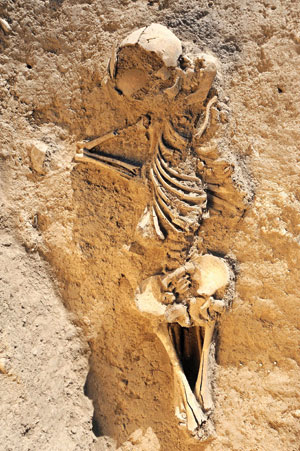
© NASA/JPL/University of Arizona/University of Nantes/ University of Paris DiderotFractional cloud coverage in Titan’s atmosphere integrated between July 2004 and April 2010. Black areas are cloud free and yellow are fully covered.
Titan's northern hemisphere is set for mainly fine spring weather, with polar skies clearing since the equinox in August last year. Cassini's VIMS instrument has been monitoring clouds on Titan continuously since the spacecraft went into orbit around Saturn. Now, a team led by Sébastien Rodriguez (AIM laboratory - Universite Paris Diderot) has used more than 2000 VIMS images to create the first long-term study of Titan's weather that includes the equinox, using observational data. Dr. Rodriguez will be presenting the results at the European Planetary Science Congress in Rome on Wednesday 22nd September.
Together with Saturn in its 30-years orbit around the Sun, Titan has seasons that last for 7 terrestrial years. The team has observed significant atmospheric changes between July 2004 (early summer in the southern hemisphere) and April 2010, the very start of northern spring. The images showed that cloud activity has recently decreased near both of Titan's poles. These regions had been heavily overcast during the late southern summer until 2008, a few months before the equinox.
"Over the past six years, we've found that clouds appear clustered in three distinct latitude regions of Titan: large clouds at the north pole, patchy cloud at the south pole and a narrow belt around 40 degrees south. However, we are now seeing evidence of a seasonal circulation turnover on Titan - the clouds at the south pole completely disappeared just before the equinox and the clouds in the north are thinning out. This agrees with predictions from models and we are expecting to see cloud activity reverse from one hemisphere to another in the coming decade as southern winter approaches," said Dr. Rodriguez.



Comment: The reader may also be interested in reading Fire And Ice - The Day After Tomorrow